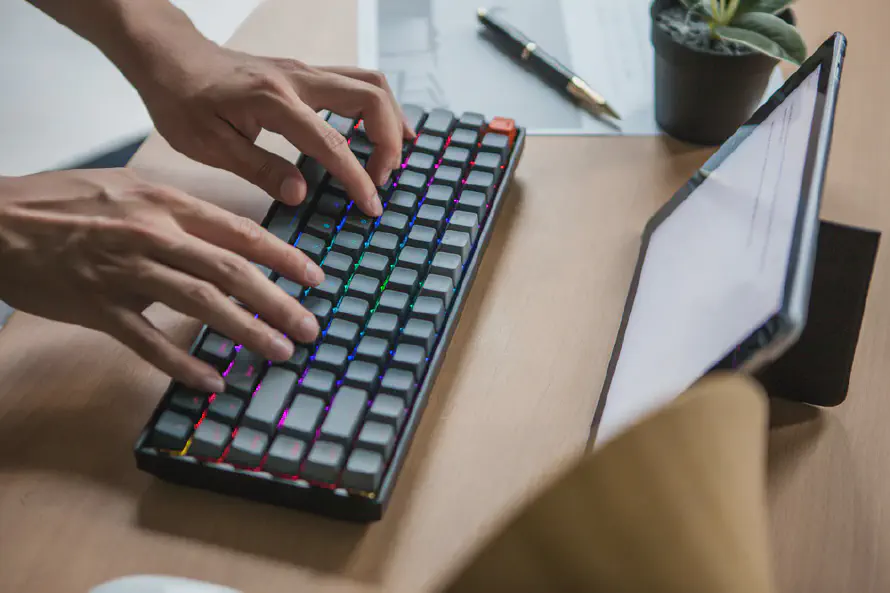The Ultimate Keyboard - Part V: Second Conclusion
This post is part of a five part series, The Ultimate Keyboard.
- Introduction
- Switches
- Size & Layouts
- Conclusion
- Second Conclusion
In October 2020, I started the hunt for the ultimate keyboard. A good keyboard is one of the most important hardware tools a programmer uses, and when some of the number keys on my external Apple keyboard stopped working, I decided to take the plunge into the sea of mechanical keyboards. After many hours of reading about keyboard sizes, layouts and switches, I found the ultimate keyboard for me:
The ErgoDox Plank EZ, a 47 key, 40% ortholinear keyboard with Zeal PC Sakurio switches.
Or at least I thought that was the ultimate keyboard for me. Getting used to the Plan EZ layout was a lot harder than I imagined. Not only is my muscle memory pretty hardened to the classic stacked keyboard layout, I was also switching between using a Mac at work and a Windows PC at home. The latter made the transition even harder. And, just to top it off, my personal life plunged into utter chaos in the beginning of 2021, and I hardly had any mental capacity left to function normally as a human being, let alone rewire my brain.
So I put the Plank EZ on the shelve, and started using an old keyboard I found in one of my moving boxes. I occasionally plugged in the Plank EZ, but every time I gave up after half an hour. I just couldn’t get the hang of it.
Hello, Keychron
But I couldn’t quite shake the feeling that I wanted to try a mechanical keyboard either. Through work I heard about Keychron, a mechanical keyboard manufacturer that makes keyboards with a physical switch to easily move between Mac and Windows. Quite a brilliant idea, and very useful for me.
Keychron offers a wide range of different stacked layout keyboards, ranging from the familiar 100% 104-keys full-sized to a 60% 61-keys mini keyboard. In the end, I went for the middle ground; the Keychron K2, a wireless 75% 84-keys compact tenkeyless keyboard with backlit, hot-swappable switches1. And I was lucky to find one on the second hand market, complete with a nice palm rest.

The K2 comes without the number pad (hence the “tenkeyless”), but retains dedicated navigation keys like home, end, page down and page up, in addition to dedicated function key, all keys I use extensively during the day. This has made the transition from the full size keyboard I used previously to the K2 pretty smooth.
The K2 I purchased second hand came with Gateron G Pro Brown switches, which were comfortable, but I replaced them with the Zeal PC Sakurio from the Plank EZ. And they are amazing. You get that smooth mechanical experience without the furious typing sound made by some mechanical switches.
Mechanized
So, there you have it. I’m now one of those people who will try to get everyone else to go mechanical. My only complaint about the Keychron K2 is that getting it to connect to my PC running Manjaro can be a hit or miss. Sometimes it just don’t wanna, and I have to either connect via USB or unpair and then pair the keyboard and the PC again. Lately, however, the keyboard has consistently connected to the PC in under a second, so there’s a good chance someoneTM fixed somethingTM somewhereTM.
To summarize; if you’re using a non-mechanical keyboard today and want to dip your toes into mechanical keyboards, the Keychron K2 comes highly recommended.
Now go and give someone you love a hug. And perhaps even a kiss if that’s appropriate ❤️
Why anyone would chose to go for a keyboard without hot-swappable switches when they buy a mechanical keyboard is beyond me. ↩︎
Feedback
This post has no feedback yet.
Do you have any thoughts you want to share? A question, maybe? Or is something in this post just plainly wrong? Then please send an e-mail to vegard at vegard dot net with your input. You can also use any of the other points of contact listed on the About page.